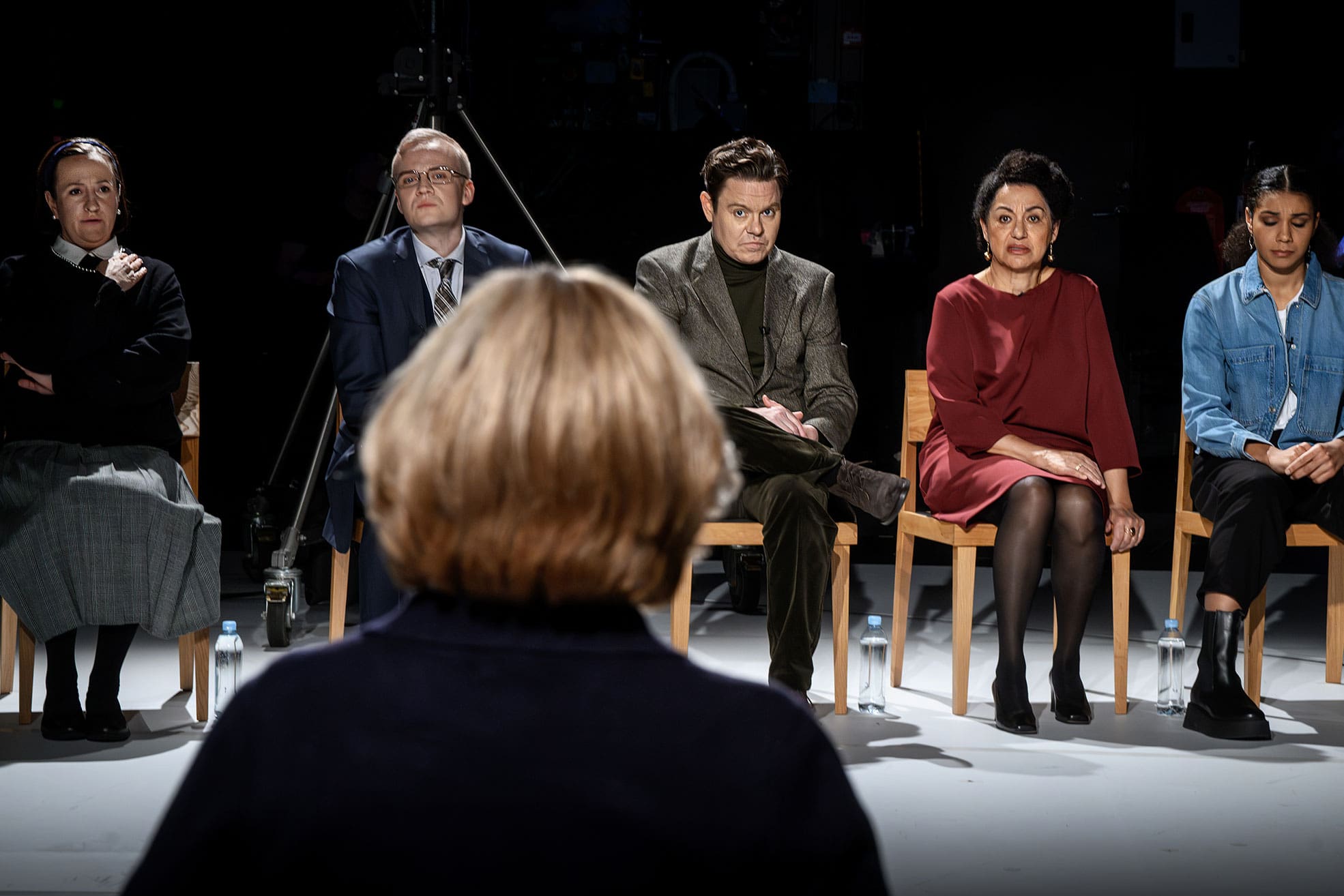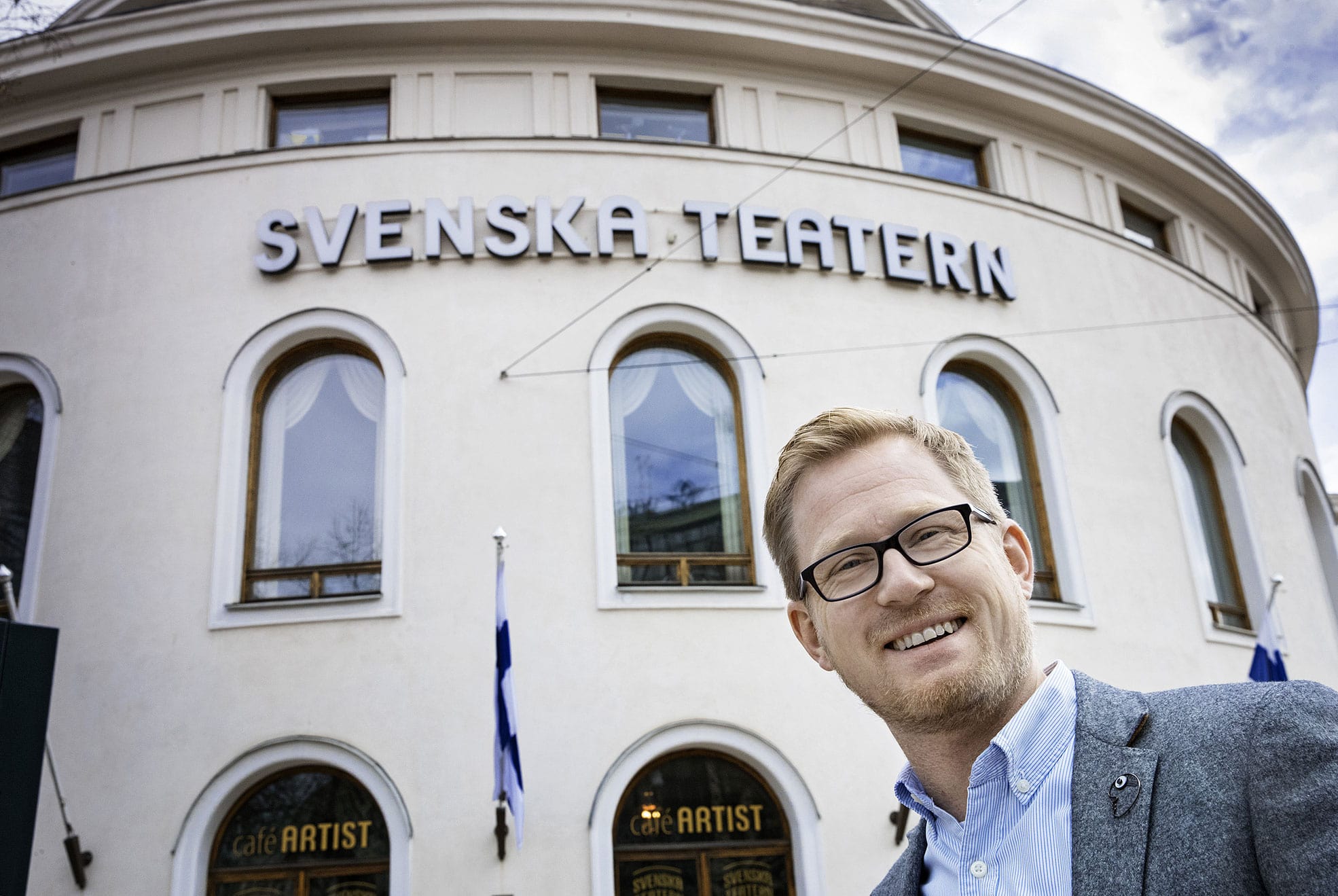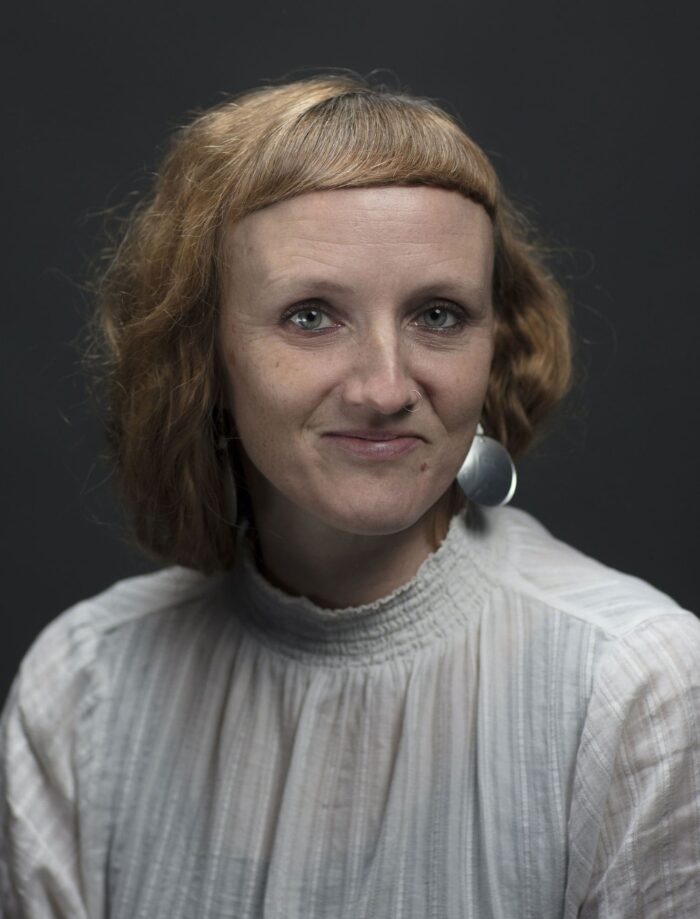Cleaning the Mirror of Society
The theater does not reflect the diversity of society as well as it should. Oulun Teatteri and Svenska Teatern have decided to address this issue with the support of the Jane and Aatos Erkko Foundation.

Svenska Teatern: Läkaren, Photo: Cata Portin, In the photo: Anna Hultin, Nina Palmgren, Miiko Toiviainen, Patrick Henriksen, Isabell Sterling, Antonia Atarah
Finland is changing, but the theater is changing more slowly, say Joachim Thibblin, director of Svenska Teatern, and Alma Lehmuskallio, artistic director of Oulun Teatteri. And this is a problem.
“The theater is society’s mirror,” Thibblin states. “We now need to ask ourselves whether the theater repertoire reflects what is truly happening in society. Who is the theater speaking to, and whose stories are we telling? These are big questions.”
Lehmuskallio believes that simply reflecting the present is not enough. “The role of art is to be ahead and look toward the future.” She wants to consider what the theater should be in five or ten years.
The Acting Community Changes Slowly
One example of rapid change is Finland’s increasing internationalization. The proportion of Finns whose native language is neither Finnish nor Swedish has doubled in 11 years. By 2024, this group makes up 9 percent of the population. In Helsinki, the share is double: over 18 percent have another mother tongue.
Keeping up with this pace of change is not always easy for the theater. For example, all actors employed full-time at Oulun Teatteri are white and able-bodied.
“I do not want to underestimate the competence of our wonderful actors in any way. Nevertheless, it is clear that when we create productions only with our own people, we easily miss something about society,” Lehmuskallio says.

To Think and Imagine
Both Svenska Teatern and Oulun Teatteri have decided to seriously invest in diversity. For this purpose, they have received funding from the Jane and Aatos Erkko Foundation: Oulun Teatteri 497,000 euros and Svenska Teatern 301,000 euros.
“Unfortunately, the reality of theater work during cultural cutbacks requires that we run faster all the time just to stay in the same place. Therefore, external funding is necessary to have time to think and imagine,” Lehmuskallio explains.
Our purpose is to identify the root causes and obstacles to what is hindering the diversification of theaters. The theater is a complex entity, especially a large one. Changes always bring structural challenges
Thibblin explains
The theaters are approaching the issue in different ways. Svenska Teatern’s three-year project “The Impact of Diversity on Sustainable Development in Theater” focuses on gathering information and understanding the phenomenon.
“Our purpose is to identify the root causes and obstacles to what is hindering the diversification of theaters. The theater is a complex entity, especially a large one. Changes always bring structural challenges,” Thibblin explains.
Venture Funding for Audiences in the North
Oulun Teatteri is approaching diversity through productions on the main stage. According to Lehmuskallio, the project “Diversity and International Competence on the Main Stage of Oulun Teatteri 2025–2027” can be seen as venture funding that enables more diverse productions on northern Finland’s largest stage.
As state funding decreases, ticket revenues become more significant. If you’re not careful, this equation easily leads to playing it safe.
For example, Lehmuskallio mentions a farce where three mistresses compete for the attention of a middle-aged, middle-class white man. “I don’t underestimate humor, but a farce aimed at a broad audience easily perpetuates a worldview that is difficult to stand behind. At the same time, it suggests that topics relevant to minorities don’t belong on the main stage.”
Oulun Teatteri defines itself as a boldly renewing theater for everyone. Lehmuskallio emphasizes the last part in particular: they want to create theater for everyone.
Searching for Home
In 2025, Oulun Teatteri’s main stage will feature the production Perillä – Destination, which was developed through workshops on the concept of home with local residents of immigrant backgrounds. The stage will also feature visitors from diverse backgrounds.
All of this costs money. For the sake of accessibility, Lehmuskallio would like to offer discounted tickets to people with an immigrant background.
“This brings us back to money. The foundation’s funding enables us to achieve things on the main stage that would otherwise be financially impossible.”
The theme of immigration is not the only way to increase diversity. Plans are also in place for a youth production with reduced ticket prices and for bringing top dance performances to the theater.
“We are the largest stage for half of Finland. If we don’t bring these works to our audience, no one else will.”
“This brings us back to money. The foundation’s funding enables us to achieve things on the main stage that would otherwise be financially impossible.”
The theme of immigration is not the only way to increase diversity. Plans are also in place for a youth production with reduced ticket prices and for bringing top dance performances to the theater.
“We are the largest stage for half of Finland. If we don’t bring these works to our audience, no one else will.”

Whose Stories Are Told?
Thibblin also sees accessibility as essential. Although Svenska Teatern is a Swedish-language theater by name, it aims to lower the threshold for everyone by providing Finnish and increasingly English subtitles for all its performances. In addition, all main stage productions offer visual and sign language interpretation.
But in addition to this, it is necessary to create a feeling that the theater speaks to more than just the Swedish-speaking middle class.
Older audiences might remember Hype – the musical that premiered at Svenska Teatern in 1994 and became a phenomenon of its time. The musical, performed by young actors (Joachim himself was in the cast, playing the nerd Martti, who met a grim fate), was especially associated with Tino Singh, an actor of Indian descent.
“That is an example of showing diverse people on stage. Perhaps it creates a sense that the theater is also for me,” Thibblin states.
Skin color is not the only distinguishing factor. Livsfarligt på allvar! – a murder mystery featuring actors with disabilities from Duvteatern – will premiere at Svenska Teatern in October.
Who appears on stage can even influence who decides to pursue a career in the field, Lehmuskallio notes.
“It would be very sad if a young person thought that neither people like them nor stories about people like them belong on stage.”